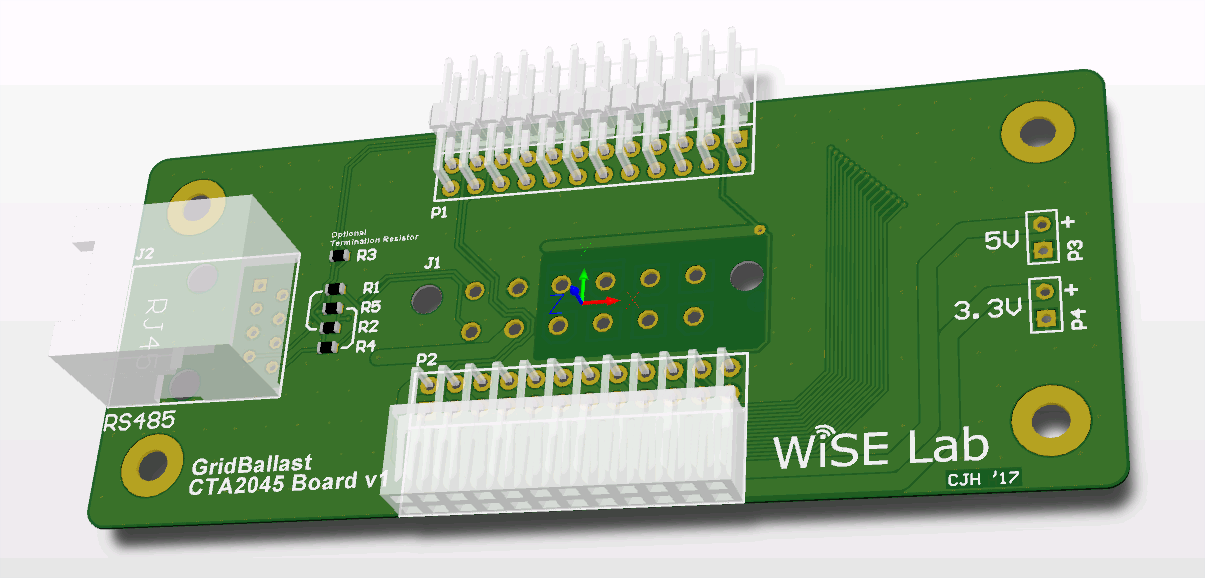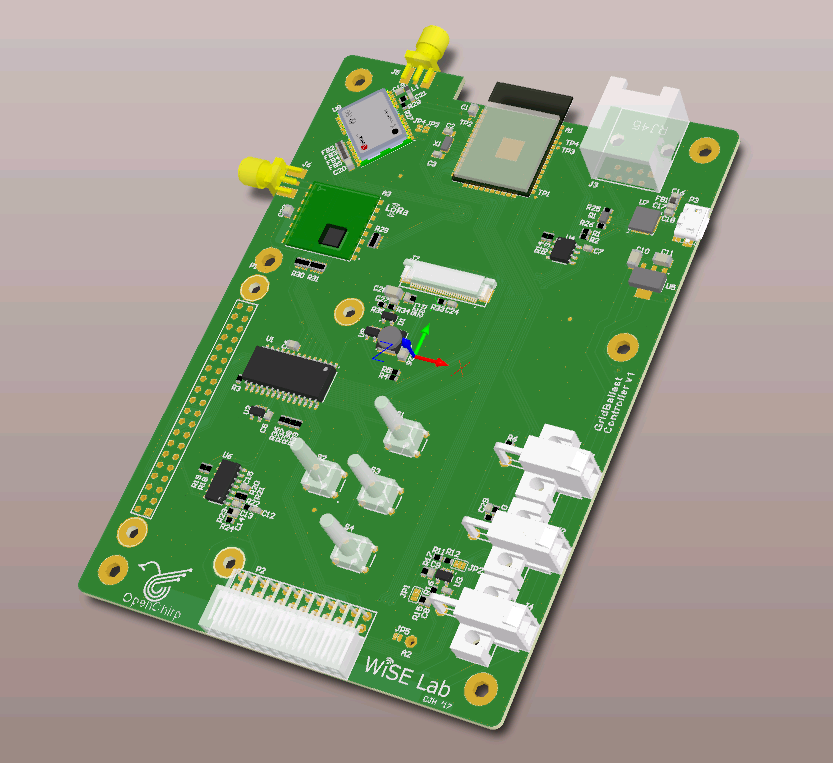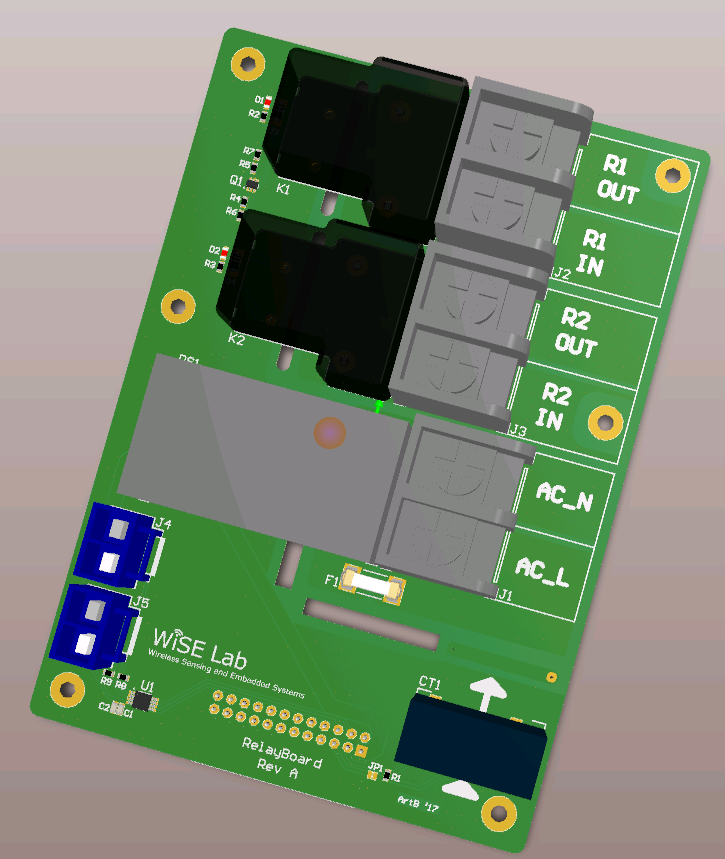Open Source Water Heater and Plug Load Controller
This is the main board that interfaces with the peripherals. The board integrate the following modules and features:
- ESP32
- U-Blox NEO-M8T GPS Timing Chip
- SX1276 Radio
- USB programming and debugging
- 2.4" OLED display
- 4 way navigation buttons
- Raspberry Pi connectivity
- 60Hz Frequency Monitor
- RS485 and I2C exposed interfaces
- 2000:1 current transformer input
- Amplified microphone input with phantom power
- Leak detector input
This is the accessory board that has two onboard high-power relays, a current transformer, and two analog inputs for temperature sensors.
This small accessory board holds the connector to support CTA2045 and other RS485 communications.

- Install the
xtensa-esp32-elftoolchain by following the instructions here: http://esp-idf.readthedocs.io/en/latest/get-started/#setup-toolchain. Make sure thextensa-esp32-elf/binis added to yourPATH. - Clone the repository
$ git clone --recursive https://github.com/WiseLabCMU/gridballast.git - Setup the
IDF_PATHenvironment variable by adding the following to your~/.profile:export IDF_PATH="<path/to/gridballast>/Support/esp-idf" - Build the controller module
In the framework configuration, navigate to "Serial flasher config" and select the default serial port. This can be determined by checking which device appears in
$ cd Source/framework $ make/devwhen the controller module is connected via USB. It should start with/dev/ttyUSB. Save and exit the configuration interface. - Flash the controller
$ make flash
The WiFi SSID and password can be configured at runtime (without recompiling and reflashing the module). Other parameters could be added as necessary. Configuration parameters are stored in flash using the NVS Library. On initialization of the wifi module, if stored wifi configuration parameters exist, they are loaded and used to connect to wifi. If no parameters exist, the module launches configuration mode.
In configuration mode, the module broadcasts a wifi network named "gridballast". A user can connect to the gridballast network and open
http://[module-ip]/ (by default 192.168.1.4, can be found programatically with tcpip_adapter_get_ip_info) in a web browser. The module will present a webpage where the SSID and password can be configured.
To exit configuration mode, the module must be rebooted.
TODO: Gridballast should also support entering configuration mode by pushing a button.
This can be done by calling wifi_enter_config_mode() (see Source/framework/main/include/wifi_module.h).

